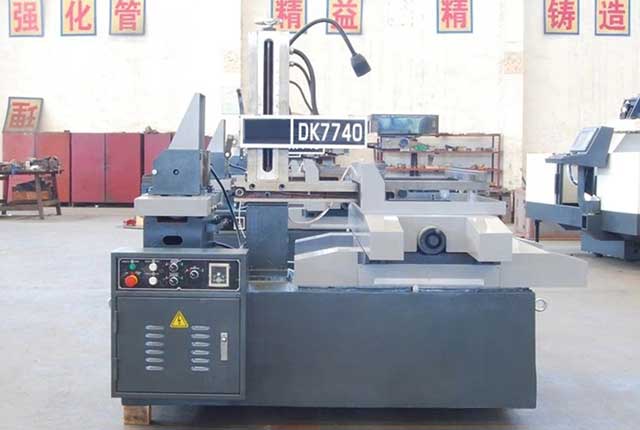WMT CNC Industrial Co., Ltd | All Rights Reserved.Design & Developed by VW Themes

Electrical discharge machining (EDM) is a new technology that uses electric energy and heat energy to process. The difference between electrical discharge machining and general machining is that the tool and workpiece are not in contact during electrical discharge machining. Instead, the metal material is gradually eroded by the pulse spark discharge generated between the tool and workpiece, which produces partial and instantaneous high temperature during discharge. Because there are visible sparks in the discharge process, it is called electrical discharge machining.
In EDM, the tool electrode and the workpiece are connected to the two poles of the pulse power supply respectively, and immersed in the working fluid or charged into the discharge gap. The tool electrode is controlled to feed the workpiece by the automatic gap control system, when the gap between the two electrodes reaches a certain distance, the pulse voltage applied on the two electrodes will breakdown the working fluid and produce spark discharge.
A large amount of heat energy is concentrated instantaneously in the microchannel of discharge, and the temperature can be as high as 10000 ℃ or above, and the pressure also changes sharply, so that a small amount of metal material on the working surface immediately melts and gasifies, splashes into the working fluid in an explosive manner, condenses rapidly, and forms solid metal particles, which are taken away by the working fluid. At this time, a tiny pit mark is left on the surface of the workpiece, the discharge stops for a short time, and the working fluid between the two electrodes returns to the insulation state.
Then, the next pulse voltage breaks down at another point where the two electrodes are relatively close to each other, resulting in spark discharge, and the above process is repeated. In this way, although the amount of metal removed by each pulse discharge is very small, because there are thousands of pulse discharges per second, a large amount of metal can be removed, which has certain productivity. Under the condition of keeping the constant discharge gap between the tool electrode and the workpiece, the tool electrode is continuously fed to the workpiece while the metal of the workpiece is eroded, and finally, the shape corresponding to the shape of the tool electrode is machined. Therefore, as long as the shape of the tool electrode and the relative motion between the tool electrode and the workpiece is changed, various complex surfaces can be machined.
The commonly used materials such as copper, graphite, Copper tungsten alloy, and molybdenum, which have a high melting point and corrosion resistance. In the process of machining, the tool electrode also has a loss, but it is less than the metal removal of the workpiece, even close to no loss.
As a discharge medium, working fluid also plays the role of cooling and chip removal in the process of machining. The commonly used working fluid is the medium with low viscosity, high flash point, and stable performance, such as kerosene, deionized water, and emulsion.
(1) Electric spark perforation
Perforation machining is one of the most widely used in EDM. It is often used to process various types of holes (a round hole, square hole, polygonal hole, special-shaped hole), curved hole, 4ql, micro-hole, etc., such as cold stamping die, wire drawing die, extrusion die, nozzle, the spinneret, etc.
The dimension accuracy of the perforation is mainly guaranteed by the size of the tool electrode and the spark discharge gap. The cross-sectional dimension of the electrode should be uniformly reduced by one machining gap compared with the size of the hole to be machined. The dimension accuracy of the electrode should be one level higher than that of the workpiece, generally not lower than it7. And the straightness, flatness and parallelism are not more than 0.01mm in 100 mm length.
(2) EDM cavity machining
EDM cavity machining includes forging die, die casting die, extrusion die, bakelite dies, plastic die, etc. It is difficult to process the cavity, mainly because it is not through-hole processing, the amount of metal erosion is large, the working fluid circulation and the elimination conditions of electric erosion products are poor, and the tool electrode loss cannot be compensated by feeding;Secondly, the machining area changes greatly, and because of the complex cavity and uneven electrode loss, the machining accuracy is greatly affected,Therefore, the productivity of cavity processing is low, and the quality is difficult to guarantee. In order to improve the machining accuracy of the cavity, pure copper and graphite with high corrosion resistance should be used as electrodes. In addition, some small plastic mold surface grinding treatment also need to use EDM.